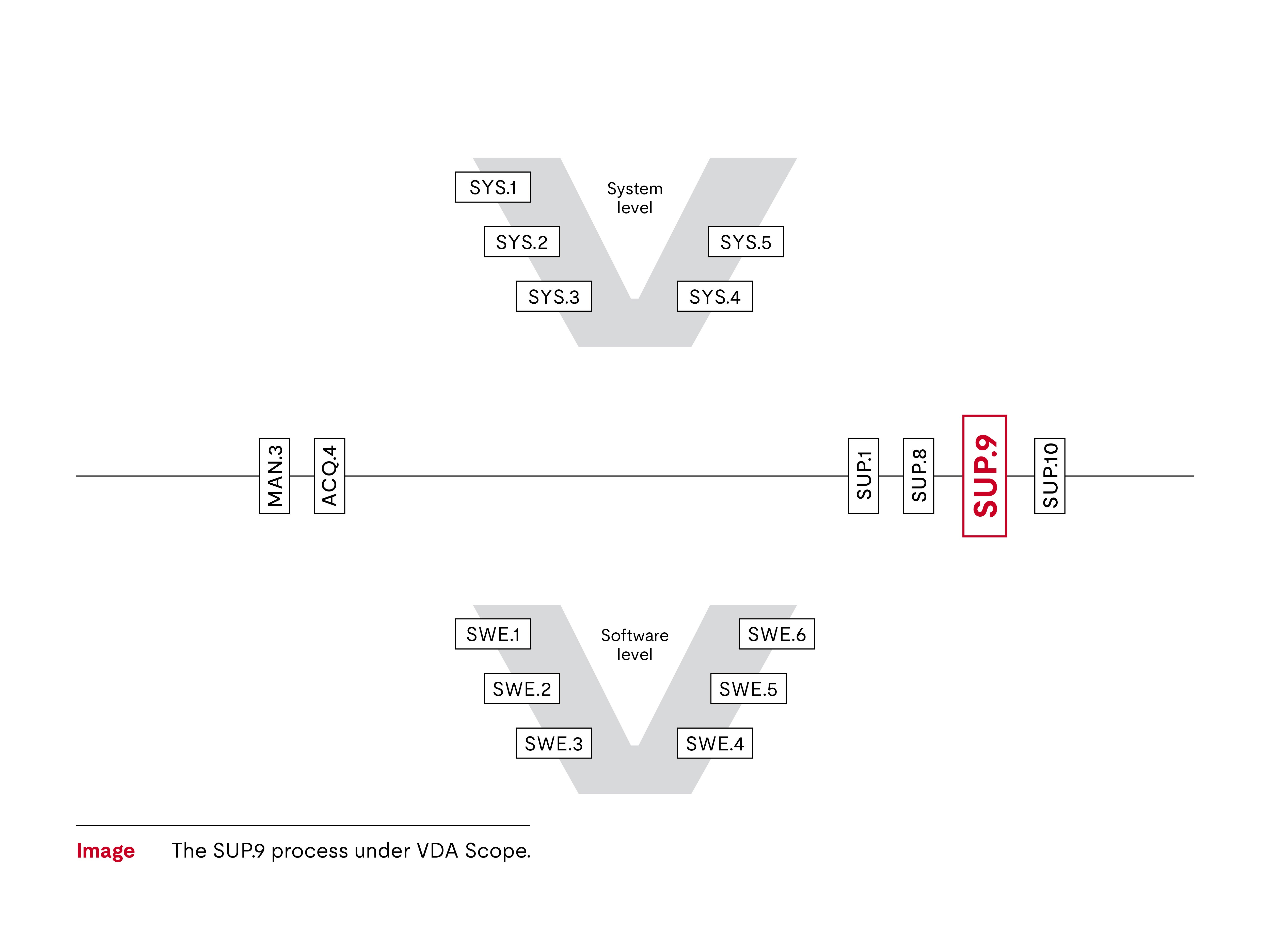
Process ID: SUP.9
Process group: Support
Automotive SPICE® is a trademark of VDA QMC.

The Automotive SPICE® Problem Resolution Management (SUP.9) can help your organization to identify, analyze, manage and track issues to closure.
In projects, many types of challenges can arise that your organization must resolve. For example, a customer could report a serious malfunction in the software that was delivered last week. Someone needs to investigate the cause of the malfunction, fix it and deliver a corrected version. This sequence often involves many people and multiple steps. More problems could happen along the way. For example, the customer may not receive corrected software and, as a result, be disappointed.
To prevent this scenario, organizations need to reliably manage their problem resolution management process and establish that all work steps are completed, and the correction is ready on time.
In the following paragraphs, we discuss the most important aspects of problem resolution management in Automotive SPICE®.
Important aspects of the Automotive SPICE® problem resolution management process (SUP.9)
Develop an effective problem resolution management strategy.
Solving a problem often requires dozens of people in different teams and locations. Problems may not reach a proper resolution if you don't coordinate these people and track the status of problems as they flow through the different steps. Even though required for CL2 (GP 2.1.1), an effective problem resolution management strategy defined from the start of the project makes the workflow, progress tracking and responsibilities clear to everyone involved.
Focus on urgent resolution actions.
Take as an example that a customer performs integration tests in the field, and your device does not interact correctly with other devices, blocking the entire test process. The customer calls someone in your company and wants a solution immediately. How do you deal with the situation if your problem resolution process involves many steps and takes much more time than the customer expects.
Within your strategy, you must define how to handle such situations. This includes having an accelerated process, which may involve skipping some of the tests normally required. This involves some risks. Therefore, you also must define who can authorize the accelerated process. Finally, you must specify how the process steps you have skipped are to be made up after the end of the urgent resolution case. It’s also essential to train the personnel involved in these steps properly. These steps can help you save valuable time and promote customer satisfaction while still doing everything your processes require.
Solve the problems.
Examples of problem resolution management issues include:
- Problem management is out of control because nobody is in charge.
- Problems get lost or stuck or are solved too late.
- The developers don't have enough time to solve problems when many problems come in.
Your problem resolution management strategy should include the problem status model — for example, new, in evaluation, in implementation, implementation completed, released, delivered, approved by customer. When developers perform the problem resolution process, they switch the status in their task management tool to the next status.
It is important to designate someone to actively monitor the flow of the problems. This person should regularly create status reports or dashboards. These reports can be evaluated in weekly technical sessions, where issues are discussed and resolutions agreed upon.
Developers should not be completely allocated to only developing new features, but some allocation of their time should be reserved for problem resolution, as well as for change management activities. If you know when many new issues are likely to arise, plan so that developers have enough time to handle the issues.
Setting up and following an effective problem resolution management process can help you to:
- Implement powerful problem resolution management functionality.
- Keep control of releases.
- Prevent customer dissatisfaction.
Why choose UL Solutions Software Intensive Systems for Automotive SPICE® support?
UL Solutions Software Intensive Systems can support automotive original equipment manufacturers (OEMs) and suppliers in:
- Achieving the required capability levels within key development processes.
- Systematically improving existing workflows and methods.
- Evaluating the status of process improvements through formal assessments and gap analysis.
- Fulfilling the requirements of Automotive SPICE® in harmony with security, functional safety and agile methods.
- Training staff and assessors.
Learn more about the Automotive SPICE® Problem Resolution Management process
Interested in deepening your understanding of the Automotive SPICE® Problem Resolution Management process (SUP.9) from the recommended VDA Scope? Watch our video.
Get connected with our sales team
Thanks for your interest in UL's products and services. Let's collect some information so we can connect you with the right person.
